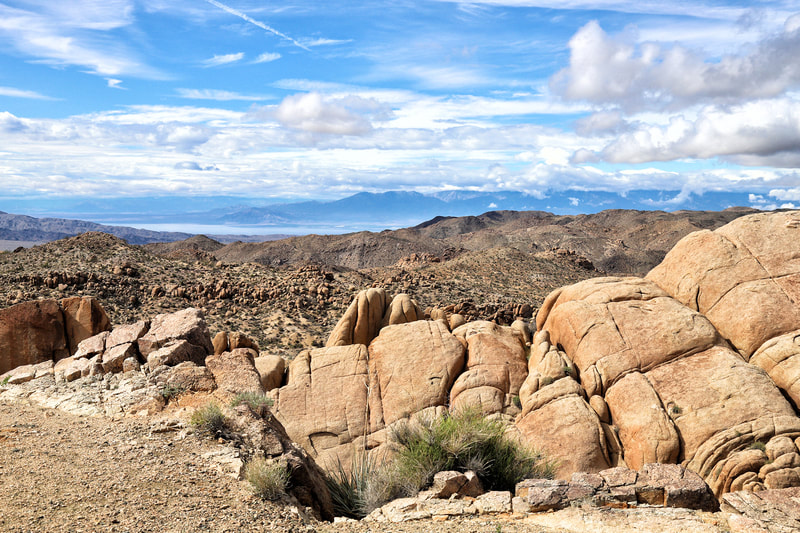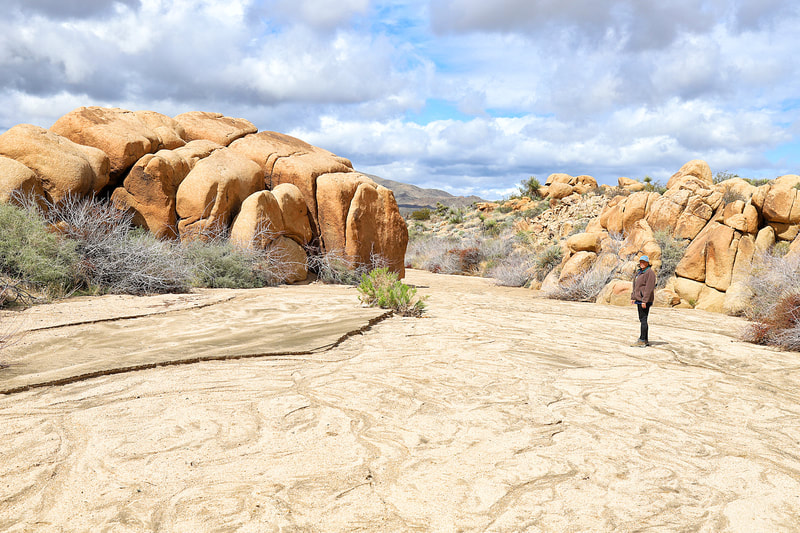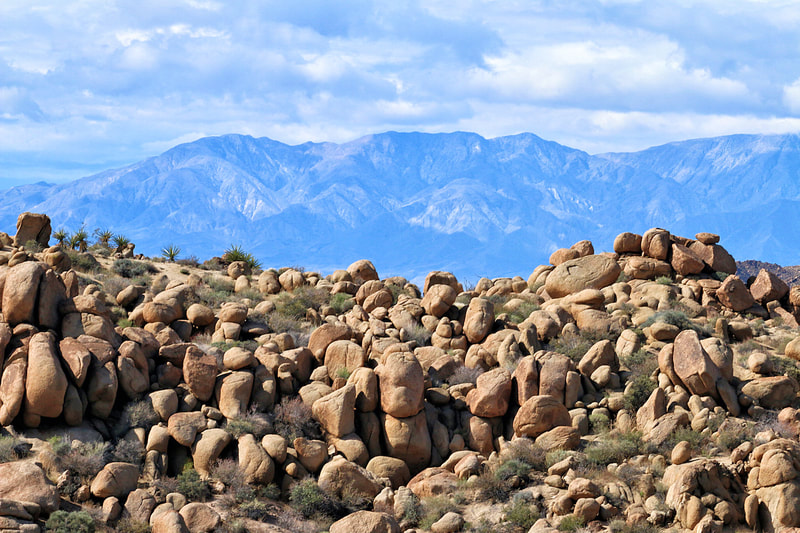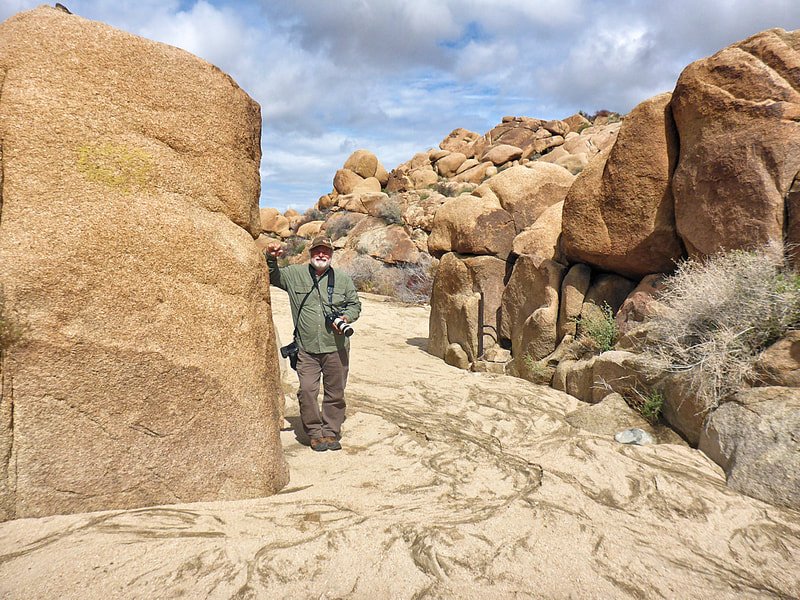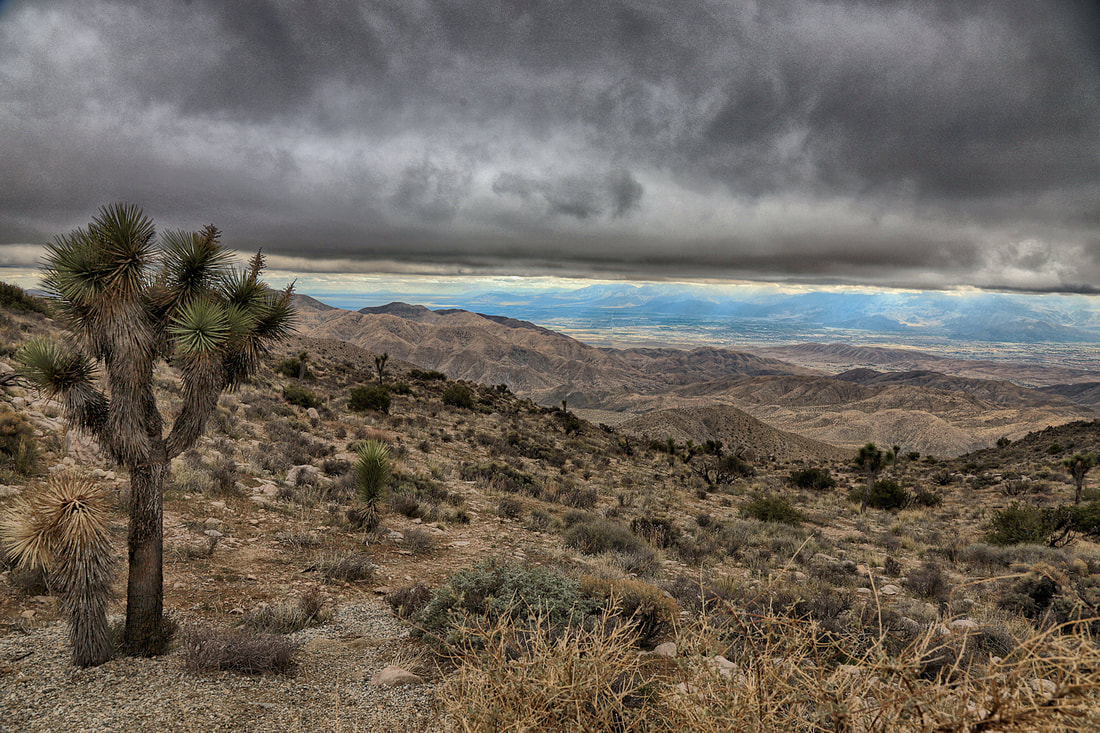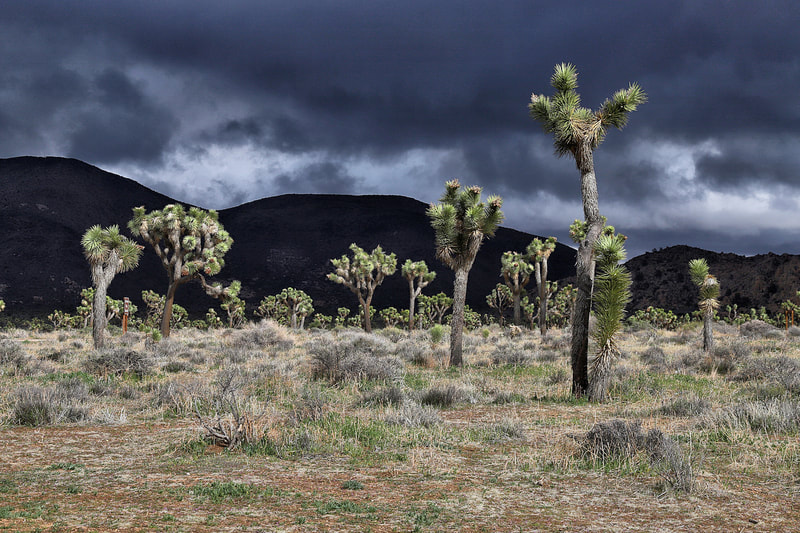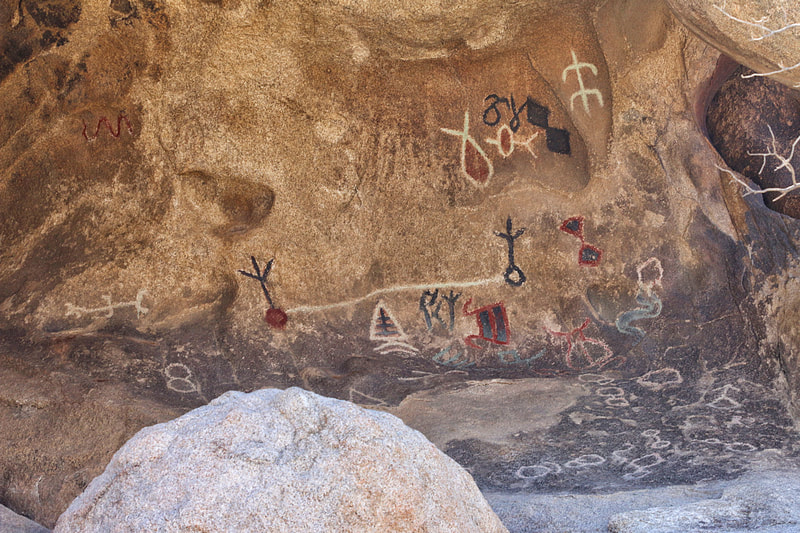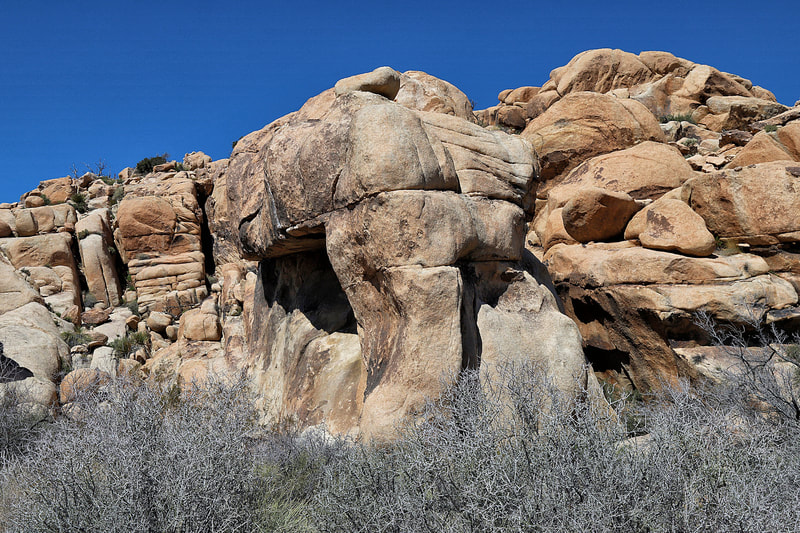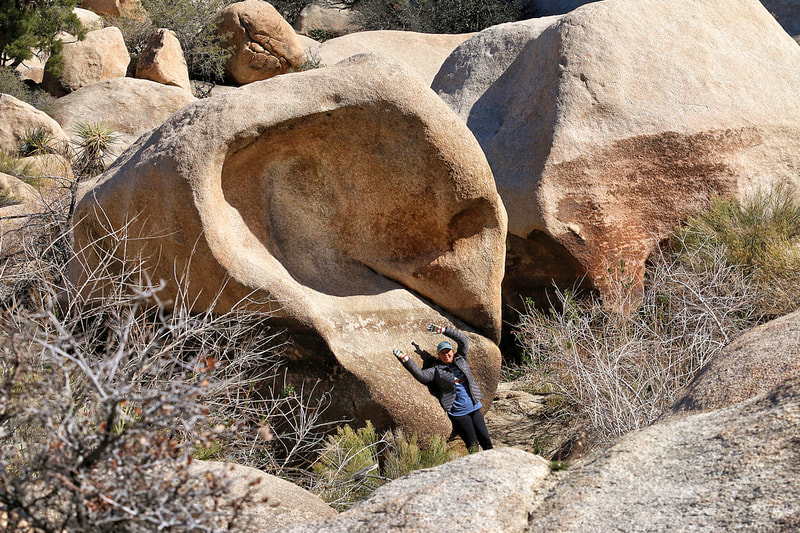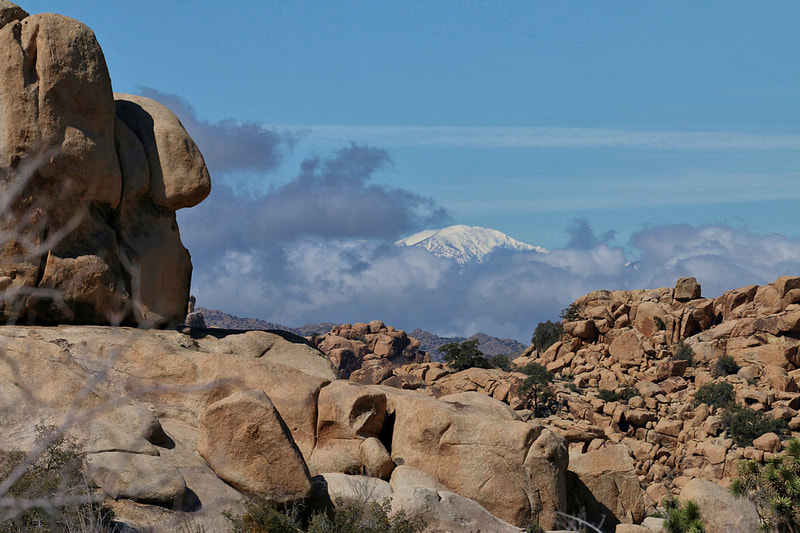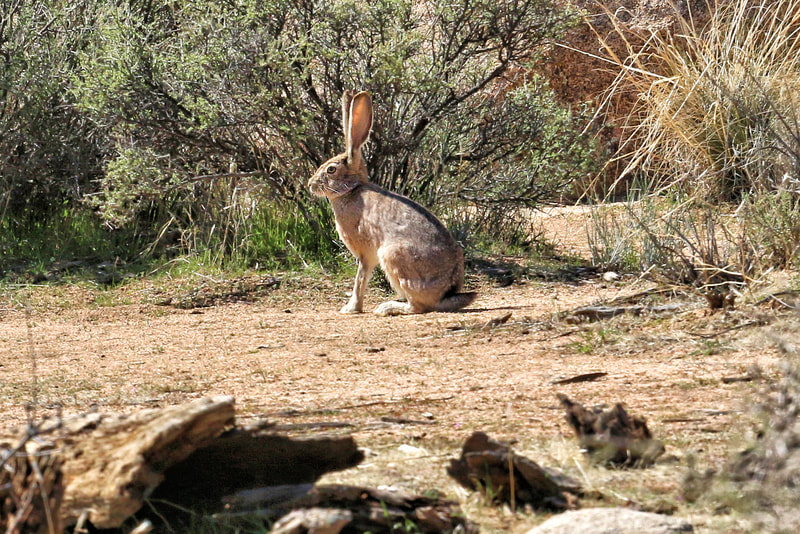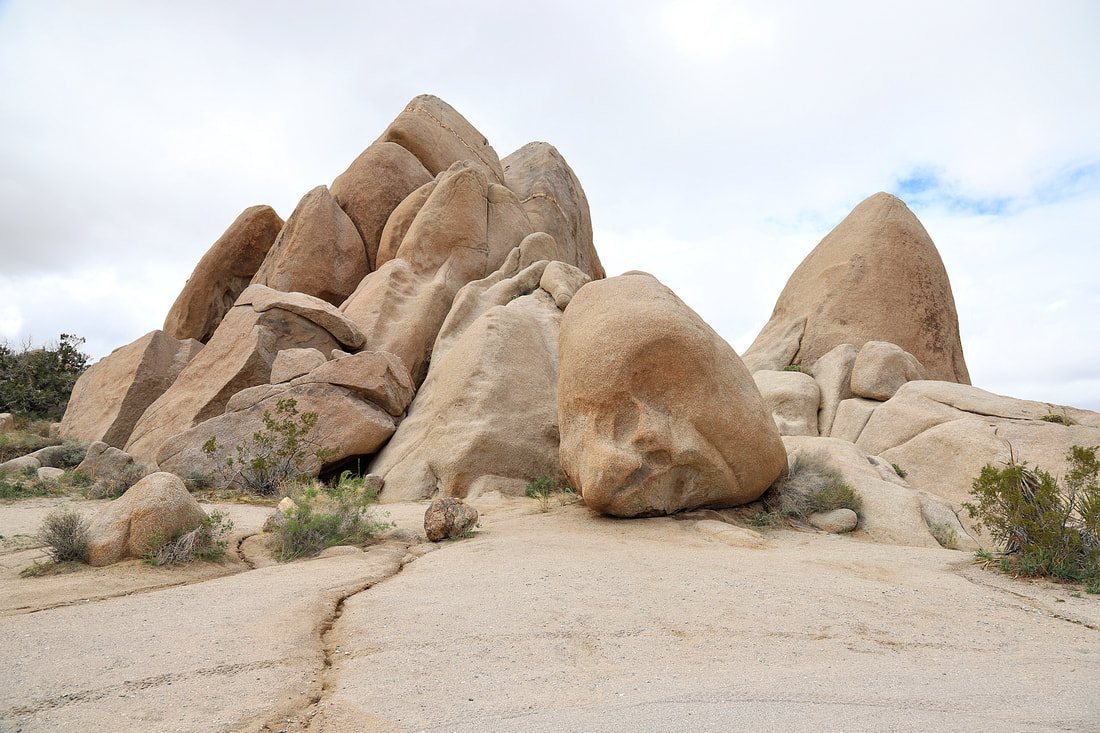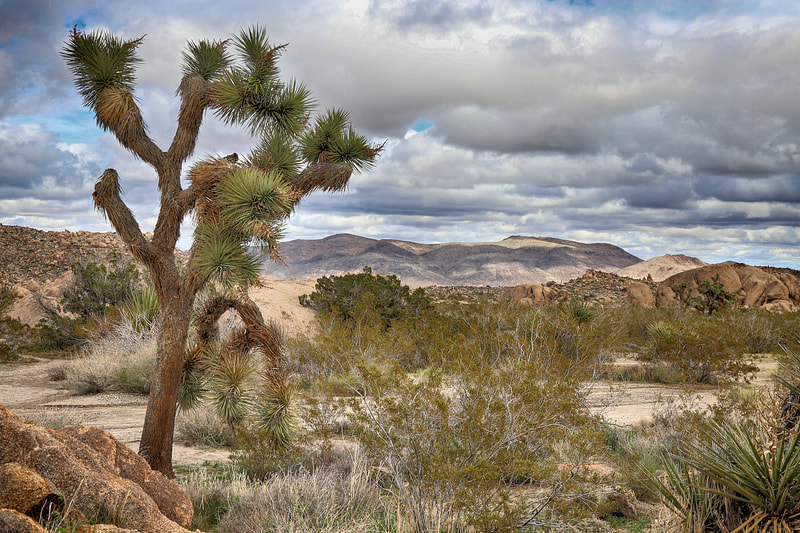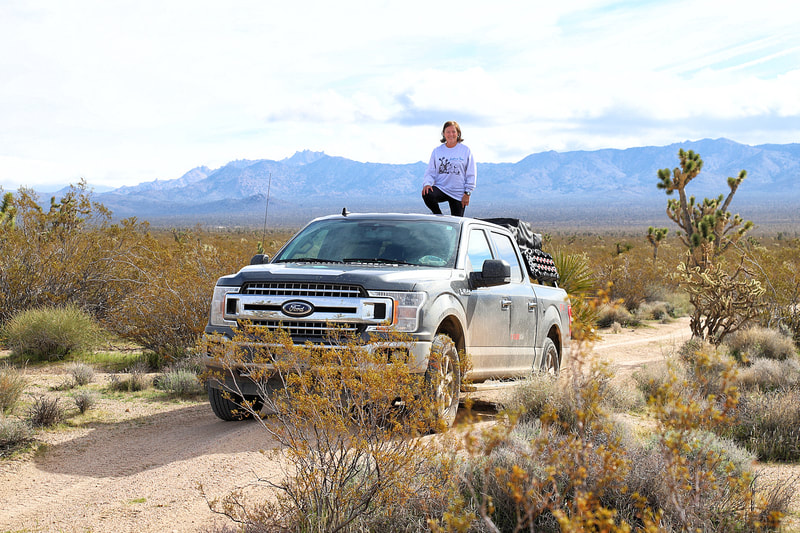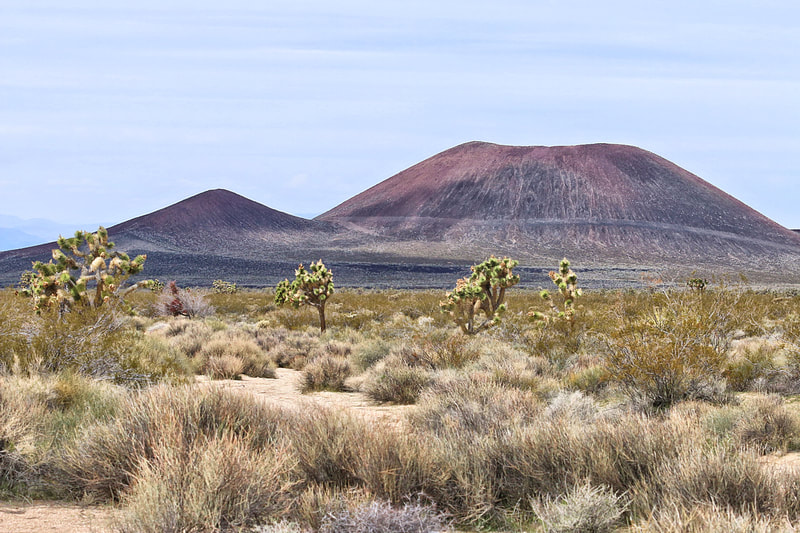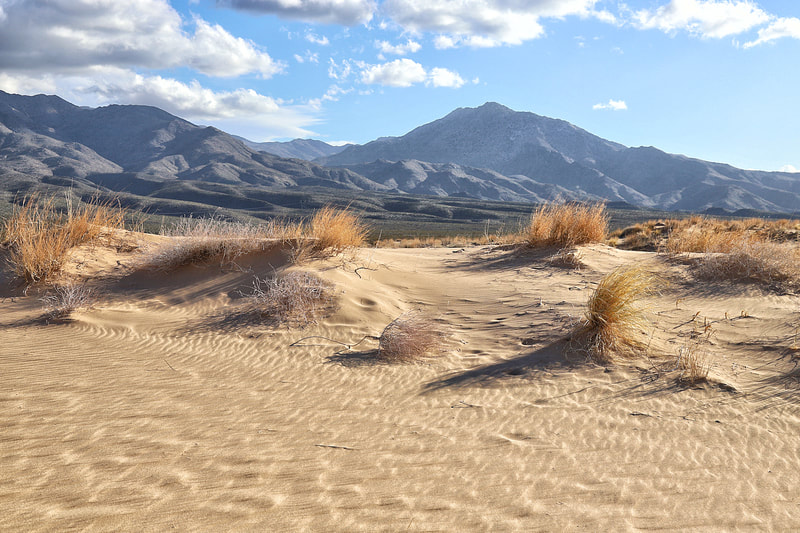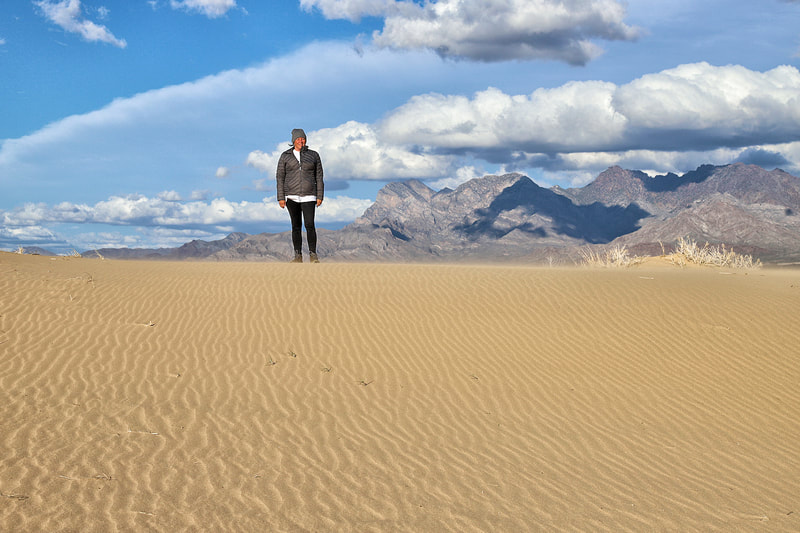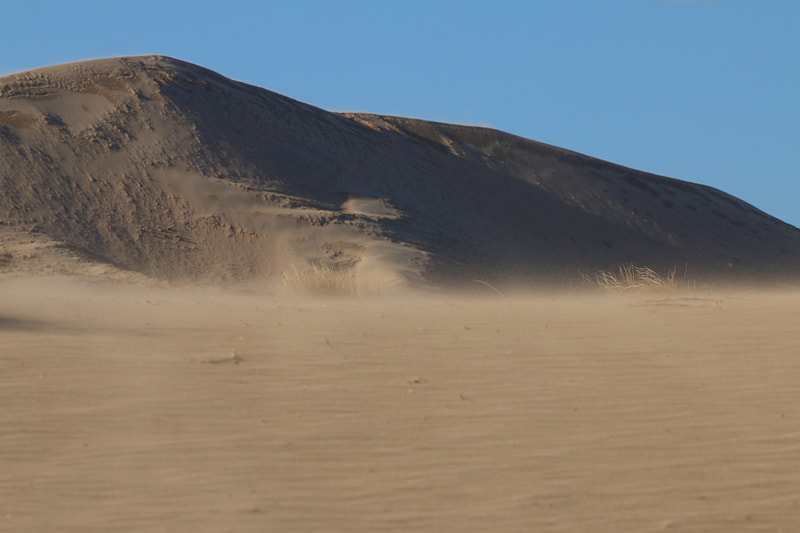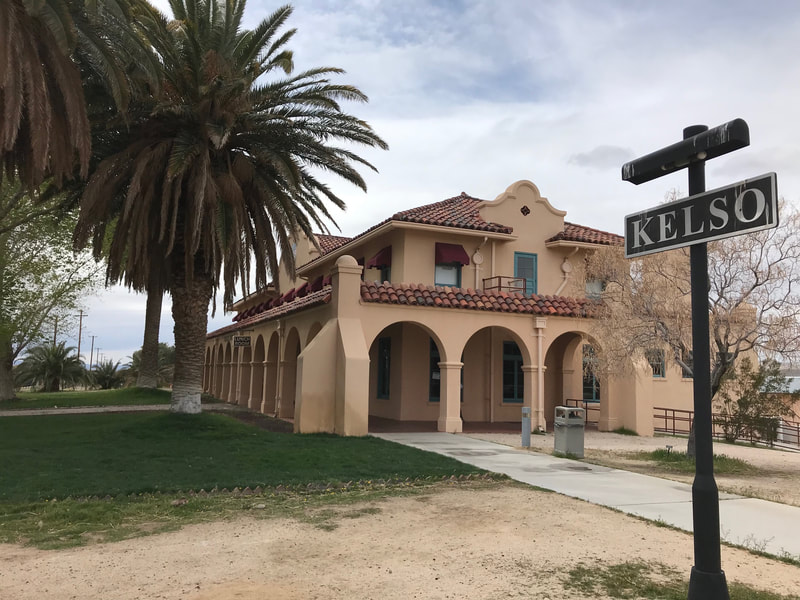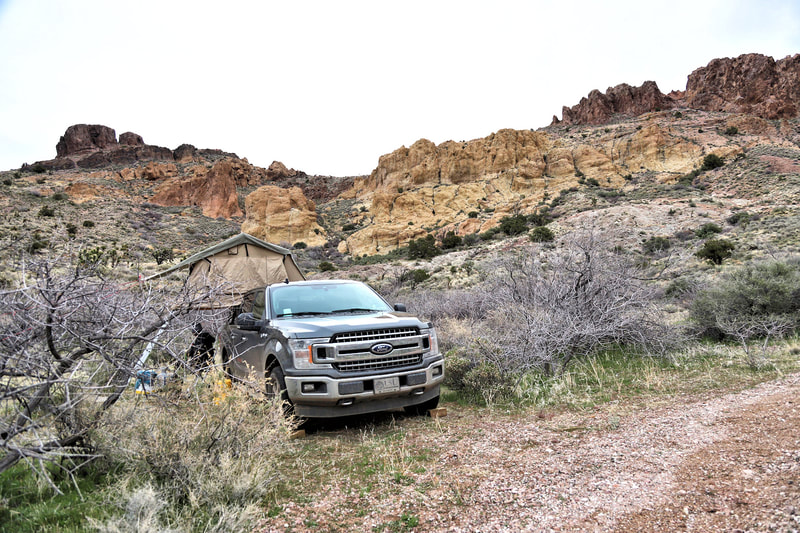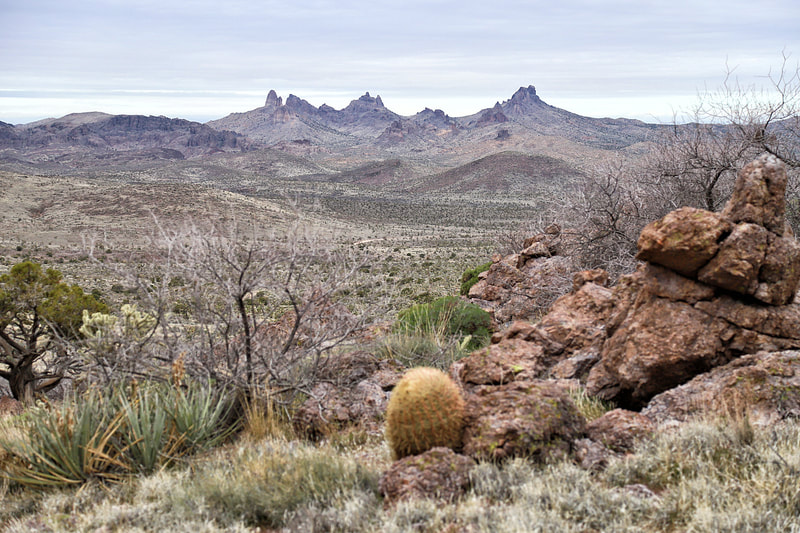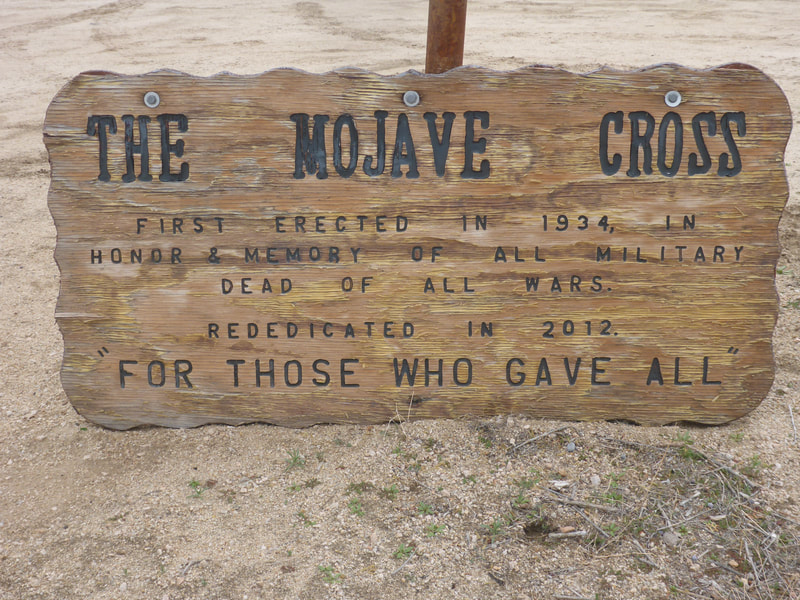Joshua Tree National ParkFranklin D. Roosevelt proclaimed Joshua Tree National Monument in the 1930's, and in 1994 Congress renamed the park Joshua Tree National Park as part of the California Desert Protection Act. The Joshua tree isn't really a tree but is a species of yucca. The tree can grow to over 40' tall and is home to many species in the park. The park is divided into two regions know as the Colorado Desert (eastern half) and the Mojave Desert (western half). The Colorado area reaches 3,000' and below sea level while the Mojave area is 3,000' and above sea level.
|
Alert: road closed due to flooding
To our amazement, the rain we were trying to escape in Arizona had been going on here at Joshua Tree and the main road going into the park on the south end was closed. We were able to go to the visitors center and find a trail outside the park gate called Cottonwood Springs.
COTTOnWOOD SPRINGS and Mastodon Trails
|
CHOLLA CACTUS GARDEN is an area dominated by cholla cactus which gets it's name for attaching itself to the unwary. We walked through the garden and managed to not get stuck by any plants.
|
KEYS VIEW is a stunning view of the mountains and valley below. At 5, 185' we ran into the clouds and couldn't see anything. A short way down the mountain a handicap viewing area allowed us the chance to snap this picture just below the clouds. The San Andreas is part of the valley below.
|
SKULL ROCK
GEOLOGY ROAD
|
Just past Skull Rock was a primitive road we wanted to drive but because of the flooding it was closed to vehicle traffic. On the second day we saw that the road signs had been pulled back but not removed and several 4x4 vehicles were on the road. We decided to take a look and if got bad, we would turn around. The road meanders between the Joshua Tree desert zone into the raw rock boulder mountains. We did run into some big mud holes.
|
|
Mojave Road

The Mojave Road was formally an old government road known as the Mojave Trail is a historic route and a present day dirt road across what is now the Mojave Desert. The road is about 130 miles long and runs east - west across the Mojave National Preserve. We found several interesting places to explore including the lava flow areas with cinder cone peaks and underground lava caves. Parts of the road are like riding a roller coaster with loose sand and others had washboard ripples.
Castle Mountains National Monument
The Castle Mountain Monument borders the Mojave National Preserve and has several backroads to explore. The weather was a mix of rain, sleet and snow and we were looking for a place to camp for the night that would be out of the wind. We saw the awesome rainbow and next a beam of sunlight came through the clouds pointing to this little canyon across from the Castle Mountains. It was an epic spot for sure! Map






